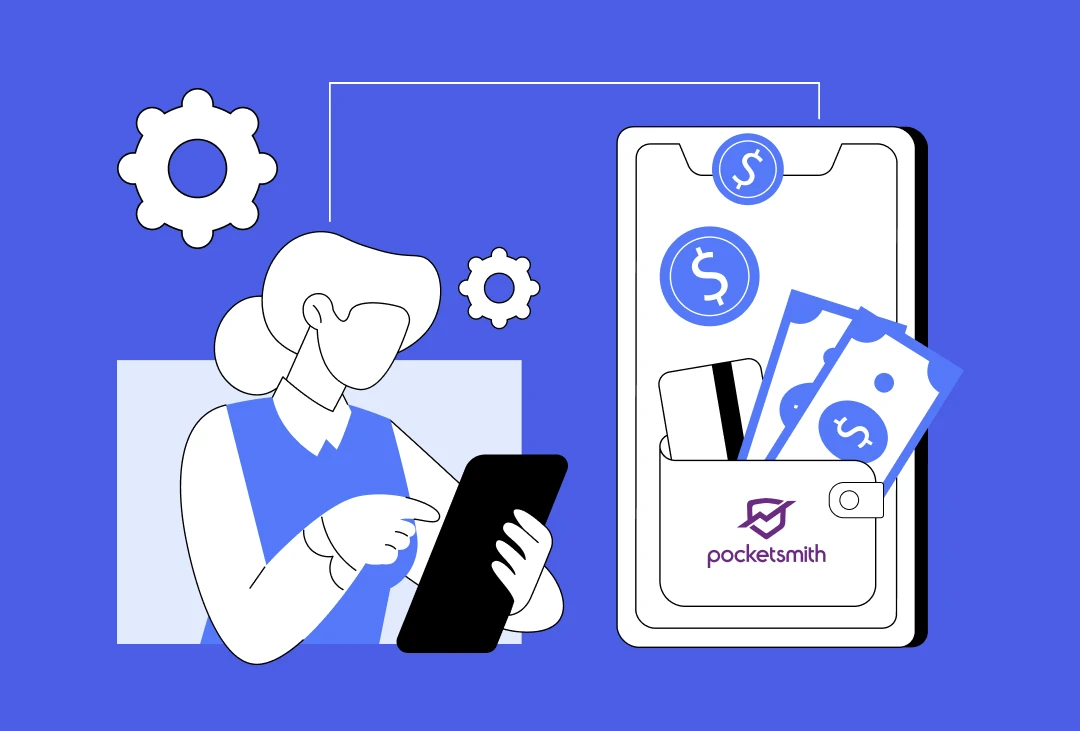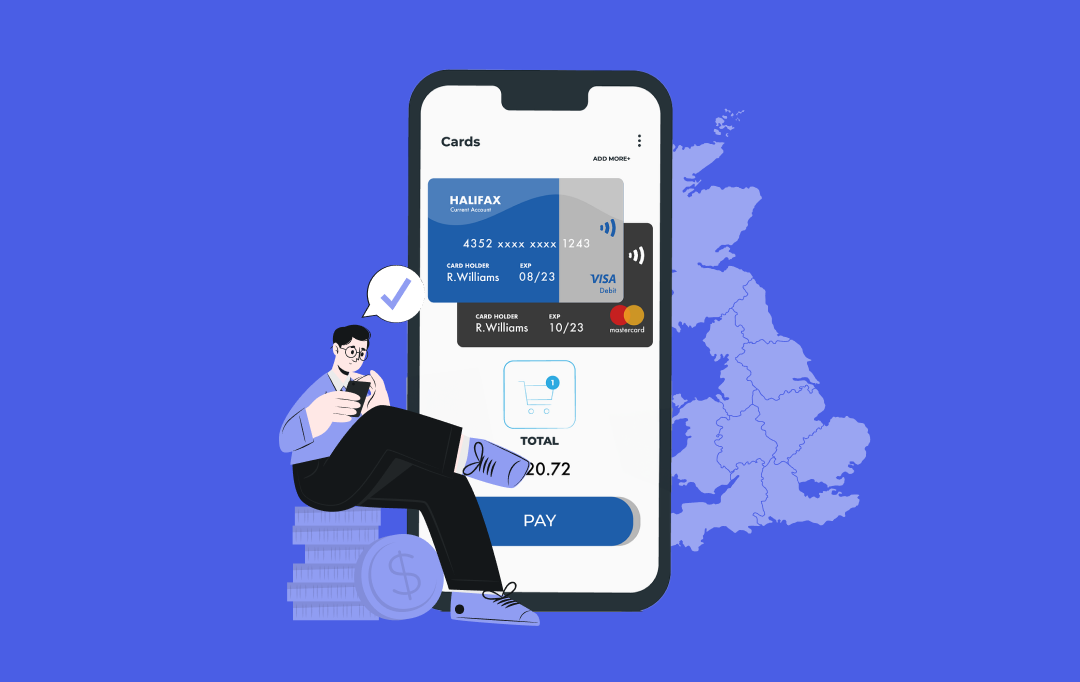- What is a Robo-Advisor and How Does it Work?
- Benefits of Robo-Advisor Platform Development for an Investment Firm
- Cost-Effective Solutions
- No Minimum Account Balances
- Real-Time Analytics and Advice
- Emotion-Free Decision-Making
- Comprehensive Documentation
- Navigating the Challenges of Robo-Advisor Platform Development
- Optimizing AI & Algorithm Accuracy
- Navigating Regulatory Compliance
- Ensuring Robust Data Security
- Delivering Personalized User Experiences
- Key Features of the Robo-Advisor Platform
- Automatic Rebalancing
- Portfolio Management
- Risk Tolerance Assessment
- Asset Allocation
- Investment Analytics
- Tax-Loss Harvesting
- Diversification
- Investor Education
- Rebalancing
- Tax Optimization
- Components of a Robo-Advisor
- Frontend for Customers
- Money Management Algorithms
- Financial APIs
- Backend System Management
- Portal for Partners
- How to Build a Robo-Advisor Platform?
- Discovery Phase
- Proof of Concept
- Design
- Development
- Deployment and Maintenance
- How Much Does It Cost to Make a Robo-Advisor?
- Use of White-Label Components or Custom Development
- Integration with Existing Banking Infrastructure
- Number and Type of Front Ends (Mobile/Web)
- Addition of Specific Features
- How Can Appinventiv Help You Empower Your Business with a Robo-Advisor Platform?
- FAQ’s
In the ever-evolving landscape of financial technology, one standout innovation that has taken center stage is the Robo-Advisor platform. This innovative technology has not only transformed the way we approach investments but is set to revolutionize the whole financial industry.
According to Statista, the robo-advisor market size is expected to reach a valuation of $1,802 billion by 2024, boasting an annual growth rate of 8.06%. The market is expected to reach $2,274.00 billion by 2027, underlining an undeniable surge in popularity for this cutting-edge investment approach.
In this era where businesses are compelled to adapt and leverage innovative solutions to stay ahead, investing in robo-advisor platform development has become not just an option but a strategic imperative. From enhancing operational efficiency, automating financial decision-making, and optimizing wealth management strategies, the advantages of a robo-advisor platform are manifold.
This blog will serve as a comprehensive guide that will help you understand the intricacies of developing a robo-advisor platform and its cost dynamics. On average, the robo-advisor platform development cost can range from $35,000 to $300,000 or more depending on multiple factors.
We will delve into all factors in detail, but first let us look into the basics and understand why building a robo-advisor application is important for your business.
What is a Robo-Advisor and How Does it Work?
A robo-advisor operates as an automated investment platform that utilizes algorithms, drawing on artificial intelligence and machine learning. Its main purpose is automated finance management, making it especially advantageous for newcomers or those with smaller portfolios.
Here is a comprehensive analysis of the functioning of a robo-advisor platform for an investment firm.
- Investor Input: Users provide crucial information, such as their investment objectives, level of comfort with risk, and other pertinent details.
- Algorithmic Portfolio Creation: The algorithm then constructs a personalized investment portfolio tailored to meet the specific needs of the investor, drawing insights from the provided data.
- Continuous Monitoring and Adjustments: The robo-advisor consistently monitors investments, making necessary adjustments to uphold the desired balance between risk and return.
This automated approach relieves investors of the constant burden of making investment decisions, streamlining the entire process.
[Also Read: How to Develop an Investment App Successfully for Your Business?]
Benefits of Robo-Advisor Platform Development for an Investment Firm
Investment firms investing into robo-advisor development gain operational efficiency, data-driven insights, and enhanced client interactions. This allows them to position themselves as agile leaders in the ever-evolving financial landscape. Let us look at the multiple benefits in detail below:

Cost-Effective Solutions
Digital advisors offer a range of advantages, and one of the most significant is their affordability. When it comes to annual fees, they come in at a much lower cost compared to personal finance managers. In fact, the fees typically amount to just a fraction of what a traditional finance manager would charge: around 0.2-0.4% of the client’s balance. This cost-effectiveness is what makes robo-advisors a compelling choice for individuals seeking financial guidance without the burden of high fees typically associated with traditional wealth management.
No Minimum Account Balances
Robo-advisors provide financial advice without minimum account balance requirements. Human wealth managers often set high minimums, as their income depends on clients’ assets under management. Thus, they find advising low-balance accounts unprofitable. However, robo-advisors’ digital platforms scale easily. So they can profitably serve clients of all asset levels. This greater accessibility makes robo-advisors uniquely valuable for beginning investors with limited capital.
Real-Time Analytics and Advice
Automated financial advisors, known as robo-advisors, offer a valuable advantage with their real-time analytics and advisory capabilities. Unlike human finance managers, who are limited by their inability to monitor markets constantly, robo-advisors are accessible 24/7. They swiftly respond to market fluctuations, rapidly adjusting their recommendations for all clients, ensuring timely responses to dynamic market conditions.
Emotion-Free Decision-Making
Emotions can negatively impact financial decisions, resulting in less than ideal outcomes. Robo-advisors excel in supplying investment recommendations free from emotional influence. Their suggestions derive from the impartial, goal-oriented analysis so that each investor receives guidance grounded in the rational examination, not subjective biases.
Comprehensive Documentation
In order to effectively manage investment advice, it is essential to have a system in place. Robo-advisors streamline this process, unlike traditional finance managers requiring clients to record advice across channels. The mobile app conveniently provides all recommendations in an organized, documented manner, simplifying access and tracking for clients. This persuasively shows how robo-advisors assist in easily monitoring financial guidance.
Navigating the Challenges of Robo-Advisor Platform Development
Building a robo-advisor platform presents several challenges, but with the right strategies, these obstacles can be effectively addressed. Here are key solutions to overcome them:
Optimizing AI & Algorithm Accuracy
AI-driven investment strategies must be precise and free from biases to ensure reliable financial recommendations.
Solution: Train machine learning models on diverse, high-quality datasets. Continuously refine algorithms through testing and human oversight to maintain accuracy and fairness in investment decisions.
Navigating Regulatory Compliance
Robo-advisors must comply with complex financial regulations such as SEC (USA), FCA (UK), and GDPR (Europe). Meeting these legal requirements while ensuring seamless operations can be daunting.
Solution: Collaborate with legal experts and integrate automated compliance solutions. Implement robust KYC (Know Your Customer) and AML (Anti-Money Laundering) measures to enhance regulatory adherence.
Ensuring Robust Data Security
Protecting sensitive financial data from cyber threats, fraud, and breaches is a top priority in robo-advisory services.
Solution: Use end-to-end encryption, biometric authentication, and AI-driven fraud detection systems. Conduct regular security audits and comply with security standards such as ISO 27001 and PCI DSS.
Delivering Personalized User Experiences
Investors have unique financial goals, requiring highly customized investment strategies to enhance engagement.
Solution: Use AI and data analytics to assess user risk profiles and deliver tailored investment plans. Create an intuitive interface with real-time insights, easy goal tracking, and educational resources.
Key Features of the Robo-Advisor Platform
Robo-advisor platforms have several unique features that make them stand out in the world of automated investing. These platforms empower investment firms to navigate the complexities of the financial landscape with efficiency and cater to the evolving needs of their clients. Let us look at multiple robo-advisor platform development features in detail below.

Automatic Rebalancing
The continuous monitoring and adjustment of an investment portfolio is made possible through automatic rebalancing, which is a crucial feature. This function regularly reassesses the asset allocation, ensuring it aligns with the client’s goals. By doing so, it effectively reduces volatility and manages risk. The automated nature of this process guarantees that the portfolio maintains its desired risk-return profile over time.
Portfolio Management
Robo-advisor platforms provide comprehensive portfolio management services to clients. These services encompass not only the initial creation of a diversified portfolio in line with the client’s goals but also the continuous monitoring and automatic rebalancing to ensure it remains aligned with their objectives. This proactive approach to portfolio management aims to optimize returns while minimizing risk.
Risk Tolerance Assessment
The robo-advisor has an onboarding process with a comprehensive questionnaire. This assesses the client’s attitudes towards risk and their financial aims. This essential move promises the investment plan made by the platform suits the client’s ease with potential market changes and losses.
Asset Allocation
Robo-advisors use mean-variance analysis to allocate assets and build diversified portfolios strategically. This advanced methodology seeks to find the best balance of risk and return by choosing assets with consideration to their past performance and how they correlate.
Investment Analytics
Robo-advisors utilize investment analytics to monitor and rebalance portfolios continuously. By processing and interpreting large data sets, automation enables informed decisions to adjust the portfolio, maintaining the desired asset allocation to achieve client financial goals.
Tax-Loss Harvesting
Tax-loss harvesting is an effective tax strategy used by robo-advisors to maximize after-tax returns for investors. The approach involves strategically selling underperforming investments to realize losses. These losses offset capital gains, thereby reducing the overall tax burden on an investment portfolio.
Diversification
The principle of diversification is essential in the world of investing, and robo-advisor platforms excel at providing access to a wide array of asset classes. This exceptional feature ensures that investors can distribute their investments across different sectors, industries, and geographic regions, thereby mitigating the impact of underperformance in any one area.
Investor Education
Robo-advisors place a strong emphasis on educating investors by offering a wide range of resources and tools for setting goals. These valuable tools empower investors with the necessary knowledge to make well-informed decisions about their financial future, thereby enhancing their financial literacy and encouraging a more proactive role in the investment process.
Rebalancing
Robo-advisors offer a unique value through constant monitoring and automated rebalancing of investment portfolios. These platforms use complex algorithms to closely track market conditions, asset performance and the overall makeup of the portfolio. The automatic adjustment ability ensures the portfolio sticks to its planned asset allocation.
The robo-advisor makes real-time decisions to buy or sell assets, maintaining this balance. This disciplined and objective rebalancing approach manages risk by keeping the portfolio aligned with the investor’s risk tolerance. Investors benefit from a hands-off yet responsive strategy that reacts quickly to market shifts. This offers risk management tailored to their financial goals.
Tax Optimization
Robo-advisors offer sophisticated tax optimization strategies. A standout is tax-loss harvesting, where the platforms identify opportunities to sell investments at a loss strategically. This offsets capital gains and reduces investor tax liability. Additionally, these platforms minimize capital gains by carefully weighing the tax implications of each trade, preserving more returns.
Tax-efficient asset allocation ensures assets with higher tax implications reside in tax-advantaged accounts. Moreover, robo-advisors provide automated tax-advantaged investing, optimizing tax outcomes without constant manual oversight. This comprehensive tax optimization approach aligns with robo-advisors’ commitment to maximize returns while maintaining portfolio tax efficiency.
Components of a Robo-Advisor
To build an effective robo-advisor, several key components must come together. By integrating the right elements, one can craft a streamlined financial platform that truly serves each client. The core elements include:
Frontend for Customers
A robo-advisory platform leads with a user-friendly interface, typically a web dashboard or mobile/web apps. Here, clients complete onboarding like Know Your Customer(KYC) and profiling. This space also enables users to monitor and manage investments conveniently. The accessible design provides a valuable interaction point.
Money Management Algorithms
When you look behind the easy-to-use customer interface, you’ll find the core of the robo-advisor: a machine learning platform with AI algorithms. This key component enables personalized portfolio options, with potentially hundreds of choices matched to different user needs and preferences.
The algorithms carefully analyze customer information – goals, risk tolerance, and investing ability – to build and manage optimal portfolios. Plus, additional algorithms can enable extra functions like tax loss harvesting or student loan management, further strengthening the value of the robo-advisor’s offerings.
Financial APIs
Financial Application Programming Interfaces (APIs) are essential for the smooth functioning of robo-advising platforms. By connecting to bank accounts, these APIs enable the automation of long-term investments and deliver guidance on optimal money management approaches.
Specifically, financial APIs handle critical operations like trade execution, portfolio balancing, and integration with supplementary financial systems. Overall, they form the backbone of robo-advisor functionalities through systematic portfolio management and personalized financial planning suggestions.
Backend System Management
An efficient and accurate robo-advisory system requires a robust back-end foundation. This workspace enables financial advisors to refine and validate portfolio balancing strategies. Additionally, it facilitates the robo-advisor development and oversight of investing algorithms, promoting continuous enhancements. By tracking overall financial performance, the back-end verifies that the robo-advisor meets rigorous reliability and efficacy standards.
Portal for Partners
For employers seeking to offer competitive 401(K) plans through a robo-advisory platform, a dedicated portal for partners is crucial. This dashboard allows employers to track payroll, balances, earnings, and other relevant metrics. It ensures a comprehensive view of the performance and engagement of their employees within the robo-advisory framework, enabling effective management of retirement plans and financial well-being initiatives.
How to Build a Robo-Advisor Platform?
To ensure the efficiency and effectiveness of a robo-advisor, the process of its creation requires strategic planning. We recommend partnering with a dedicated fintech app development firm as their expertise can bring a specialized focus to the robo-advisor platform, ensuring optimal development and implementation.
Here, we outline the key steps involved in robo-advisor platform development.

Discovery Phase
This phase primarily involves setting ROI goals and making informed technology approximations. To ensure a smooth transition, it is recommended to conduct a pre-flight workshop. This workshop serves as a platform to identify priority features, align business goals, and establish the technical architecture required for the optimal solution.
Proof of Concept
A proof of concept will be developed to assess the efficiency of machine learning algorithms in the context of a robo-advisor. This entails the creation of ML algorithms that analyze customer data and generate portfolios tailored to individual client preferences. Multiple portfolio models will be formulated and evaluated using historical stock market data.
[Also Read: POC vs. MVP vs. Prototype: The Strategy Closest to Product Market Fit]
Design
The task involves designing the front ends of consumer-facing mobile and web applications. This includes working on user flows, creating low-fidelity UI wireframes, and later advancing to high-fidelity UI screens. It is important to develop an interactive prototype, test it with users, and make adjustments to the UX/UI based on their feedback. Moreover, it is crucial to involve developers in the design process to ensure its practicality and feasibility.
Development
Once the proof of concept and design have been validated, the next step is to progress into the development phase. In this phase, one must write code and perform automated as well as manual tests to identify and resolve any glitches or issues. It is advisable to follow an agile development approach, releasing updates every two weeks to enhance the product-market fit.
To ensure smooth coordination among the development team, which includes front-end developers, mobile engineers, back-end coders, testers, and UX/UI engineers, it is essential to have a dedicated product manager and project manager.
Deployment and Maintenance
The deployment of the robo-advisor to the public involves transitioning the platform to the production environment. Additionally, if applicable, mobile apps will be uploaded to the App Store and Google Play. Ongoing maintenance includes monitoring system performance, addressing issues, and evaluating user engagement patterns. This process informs the next development cycle, ensuring that updates introduce new features and also address any unnoticed user concerns.
How Much Does It Cost to Make a Robo-Advisor?
When it comes to developing an MVP for a robo-advisor, one can expect the robo-advisor app development cost to range from $35,000 to $300,000 or more. Various factors influence the cost of developing the FinTech platform, let us look at them in detail below.

Use of White-Label Components or Custom Development
When deciding between using white-label components or custom development, costs are a key consideration. White-label solutions can provide cost savings as you utilize existing technology. Building a platform from scratch incurs greater expenses for development. Though more costly upfront, a custom-built platform allows for more flexibility and customization down the road. Weigh short and long term needs and resources when choosing an approach.
Integration with Existing Banking Infrastructure
The integration of a banking infrastructure has a significant impact on costs. Expenses may arise due to the need for seamless integration with existing financial systems, APIs, and data sources, depending on the complexity and compatibility of the current infrastructure.
Number and Type of Front Ends (Mobile/Web)
The robo investment platforms development cost is influenced by the number and types of front ends developed. The creation of both mobile and web interfaces, along with the level of sophistication in their design, contributes to the overall development costs.
Addition of Specific Features
The complexity and cost of the development process can increase due to the inclusion of specific features. For instance, when incorporating advanced functionalities like voice capabilities into the robo-advisor, the expenses for development may rise.
How Can Appinventiv Help You Empower Your Business with a Robo-Advisor Platform?
Customized robo-advisor platform development has the potential to revolutionize the financial industry, benefiting banks, startups, and financial institutions alike. It can have a positive impact on budgets, expedite returns, and enhance data analysis and client investment management efficiency. This tailored solution aims to automate routine operations and streamline processes, resulting in a more effective and seamless financial experience.
To unlock the full benefits of robo-advisor application development, consider entrusting the skilled team at Appinventiv. Our FinTech software development services not only align with your specific needs and objectives but also ensure a seamless integration of cutting-edge technologies for a robust and future-ready solution.
You can also explore the success we have achieved together with our clients in shaping the future of finance through AI and automation. For example, we built Mudra, an AI-powered budgeting app helping millennials better manage their money. We also collaborated with Bajaj Finserv to create a next-generation financial marketplace improving access. Our robo-advisor app developers can assist visionary clients like yourself in leveraging automation and AI to transform financial services, enhancing both customer experiences and business outcomes. Connect with us!
FAQ’s
Q. What is a robo-advising platform?
A. A robo-advising platform is a software or an application that leverages AI algorithms and automation to offer financial guidance to FinTech businesses and oversee their investment portfolios in a digital format. Its primary objective is to simplify and automate the investment process, providing users with increased accessibility and cost efficiency.
Q. How much does it cost to develop a robo-advisor app?
A. Robo-advisor app development cost can vary between $35,000 and $300,000. There are several factors that can impact the overall cost of development, such as the location of the hired app development firm, the overall app complexity, time frame for development, the features to be integrated into the app, etc. It is advised to get in touch with a dedicated app development company to get custom quotes based on your custom business requirements.
Q. Do robo-advisors make money?
A. Robo-advisors typically generate revenue through management fees, often calculated as a percentage (0.25% to 0.75%) of the assets under management (AUM). The fees are usually lower than those charged by traditional financial advisors, making robo-advisors an attractive and cost-effective option for investors.
Q. How long does it take to develop a robo-advisor app?
A. The time required for robo-advisor platform development can vary based on factors such as the desired features, complexity, and technology involved. On average, it typically takes anywhere from 6 to 12 months to create a fully functional and user-friendly robo-advisor fintech application.


- In just 2 mins you will get a response
- Your idea is 100% protected by our Non Disclosure Agreement.

How Appinventiv Solved Scalability Challenges for FinTech Platforms with 10M+ Users
Scalability is a crucial element in the FinTech sector as it is experiencing phenomenal growth due to the global population's need for streamlined, on-demand security and instant financial services. With the rise in user bases and transaction volume, FinTech applications must manage the growing demand without compromising performance or security, while also providing a pleasant…

How Much Does it Cost to Build a Personal Finance App like Pocketsmith?
Imagine an app that knows when your rent is due, reminds you of upcoming bills, forecasts your savings 12 months ahead, and tells you if that third coffee this week is wrecking your budget. That’s the kind of experience apps like PocketSmith deliver, and it’s exactly why personal finance apps are becoming a must-have for…

How Much Does it Cost to Build a Mobile Banking App Like Halifax in the UK?
The way people bank has changed dramatically. Gone are the days of waiting in long queues or rushing to a branch before closing hours. Today, mobile banking apps like Halifax have redefined convenience, allowing users to check balances, transfer funds, pay bills, and even apply for loans from their smartphones, anytime and anywhere. This shift…


















